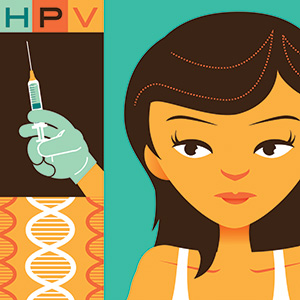The population of women who have sex with women (WSW) is composed of several demographic groups: lesbians, bisexual women and women who self-identify as heterosexual but have had sexual experiences with women. Estimates about how many women are in any of these groups are difficult to obtain, but approximately 4% to 10% of U.S. women describe themselves as lesbians,1-3 which is about 2.3 million women.4 This is comparable to estimates from a recent British survey reporting 4.9% of women have had same sex partners,5 and somewhat lower than an Australian telephone survey that reported 15.1% of women with same sex attraction or experience. (Only 0.8% of the women in the Australian study identified as lesbian and 1.4% identified as bisexual.6)
It is crucial to note that sexual identity does not necessarily equate to sexual behavior. Between 70% and 85% of WSW also have had male partners, even those who describe themselves as lesbians.1,3,6,7
Healthcare providers have a varying understanding about sexual health risks for WSW. Many providers assume that it is unnecessary to identify sexual orientation and behaviors in the health history, since women’s health needs are similar regardless of whether women have sex with women or men.8 Other providers believe that WSW, particularly those who describe themselves as lesbians, have negligible risk for STIs including HPV.7,9-11
Incidence and Prevalence of HPV in WSW
The general population of women in the United States is estimated to have an overall human papilloma virus (HPV) prevalence of 26.8% among women ages 14 to 59. The prevalence is much higher among women ages 14 to 24 (33.8%) and higher still among women ages 20 to 24 (44.8%).10 Approximately 3.4%, of women who have HPV are infected with higher risk HPV types 6, 11, 16 or 18; this corresponds to about 3.1 million women.10
HPV in the genital area may be transmitted by skin-to-skin contact as well as by penetrative sexual contact. As a result, HPV is thought to also be transmitted by women-to-woman sexual contact. About 20% of women who have never had sexual intercourse with a man have been infected with HPV.12,13 Some sexual practices of WSW seem particularly supportive of infection possibilities. Vaginal penetrative practices using sex toys and fingers or hands and sharing sex toys during a sexual experience (without condom use) are common.5,11
Genital HPV types also have been identified on human fingers,8 and some authorities estimate that 1 in 5 women who have only had sex with women have acquired HPV.13
Additionally, it is relevant to keep in mind that many WSW have had past or current male partners from whom they may also acquire HPV. Younger lesbian, gay or bisexual women may be in a life stage in which experimental sexual behaviors are more prominent,13 and changes in sexual behavior and identification over the lifetime continue to place women at risk for acquiring HPV.14
Adolescent women and college age women are known to be at high risk for acquiring HPV.12 For HPV infections that do not resolve spontaneously, screening over the lifetime allows surveillance of infections that may have been acquired earlier, before sexual orientation and self-identification as gay or lesbian occurred and some women began describing themselves as exclusively sexually active with women. A woman’s perception of her risk for HPV infection may be affected by her current sexual behaviors, rather than by cumulative lifetime sexual exposures,15. and providers who use simple categorical labels such as “lesbian” or “straight” in medical histories fail to acknowledge the probability of variable sexual behaviors across a lifetime.14,16
Co-factors in HPV Cellular Changes
Other factors seem to be relevant in the development of persistent HPV infection and cervical tissue damage. Smoking and other cervical infections are two of these.8 A large study of 708 lesbian and bisexual women in London found that past or current smoking was significantly related to sexually transmitted infections including HPV.17 A large sample of women in California who reported sexual activity with both men and women found that some WSW report high levels of sexually risky behavior such as sex with intravenous drug users, anal sex and a high number of lifetime partners.18 Thus, the risk for other cervical infections is increased, which may facilitate the development of persistent HPV infection.
Specific Population Concerns
The population of WSW appears to receive routine screening for HPV (Pap smear), with less than recommended frequency.19 A primary reason for this is less interaction with the healthcare system for family planning needs20 and well woman screening needs. Secondary prevention activities have been highly effective at identifying HPV cancer precursors and preventing progression to cervical cancer. Routine screening has made an impact on cervical cancer in the U.S., with cases and deaths lower than in developing countries.21
Evidence shows that adolescence is the time that many women begin to either consider identification as lesbians or begin to experiment with sexual behaviors with women and men.22 However, teens may not disclose their behaviors or orientation to healthcare providers. Teens often wait for the healthcare provider to raise issues of sexual behavior during history taking, and they are not likely to correct a provider who makes an assumption about heterosexual behaviors.22
The issue of confidentiality may be particularly important to sexual minority youth. While all adolescents value confidentiality and honesty in a healthcare provider, these characteristics are especially valued by teens coming to terms with a sexual identity that may be considered out of the norm.22 In a Brazilian study, WSW reported onset of sexual activity in the mid-teen years, with both heterosexual and same-sex behaviors before age 17. Women in this study specifically mentioned healthcare providers’ use of terms that presupposed heterosexuality, which were believed to inhibit the patient discussing same-sex behaviors.23
Implications for Practice
The American College of Obstetricians and Gynecologists (ACOG) recommends that young women should have a first HPV screening at age 21. The organization does not include the alternative standard of 3 years after the onset of sexual activity. ACOG also recommends combined HPV screening and cytology beginning at age 30, since the positive predictive value of HPV screening is higher with increasing age.24,25
Providers should clearly discuss the meaning of the term “sexually active” when counseling young women, making it explicitly clear that it includes same-sex activities, use of sex toys and nonpenetrative activities. They should also clarify that people who have same-sex partners can be infected by HPV.24 Anticipatory guidance should explain the possibility of transmitting HPV on fingers or hands, with sex toys or with nonpenetrative skin-to-skin contact, and the importance of using condoms, gloves and cleaning sex toys. Adolescents who have same-sex experiences need such information to reduce the perception of being immune to the risk of HPV.13 Providers should expect that adolescents may demonstrate mixed sexual behaviors and experimentation.
As women mature, remember the natural history of disease in HPV – a long or variable latency period before the onset of verified dysplasia. Thus, even if WSW report consistent same-sex behavior in recent years, it is unwise to assume that no remote heterosexual contact has occurred.1,13,24 Both patient and provider should understand that any person who has engaged in any type of sexual activity may be exposed to HPV. Thus, after age 30, WSW should continue to be screened every 2 to 3 years after three normal consecutive Pap tests, just as heterosexual women, according to guidelines.1,25
The Future
Misperceptions about the need for cervical cancer screening in WSW are common. Both women and healthcare providers may have an inaccurate perception of the risk for HPV in this population, leading to missed opportunities for screening. Further research on the prevalence of HPV and strategies to encourage screening in WSW is needed, as well as improved knowledge and education about WSW among providers.






